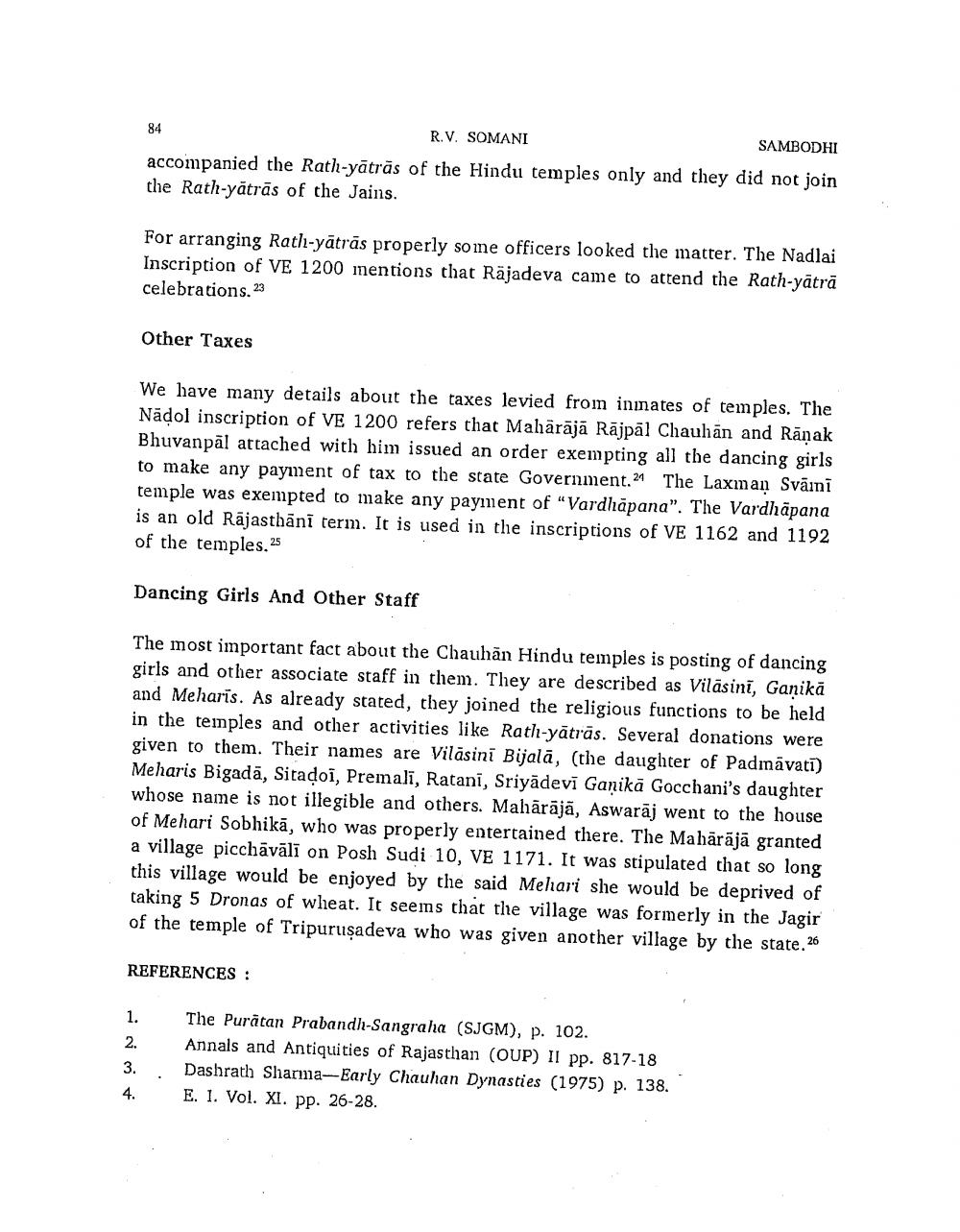________________
R.V. SOMANI
SAMBODHI
accompanied the Rath-yātrās of the Hindu temples only and they did not join the Rath-yātrās of the Jains.
For arranging Rath-yātrās properly some officers looked the matter. The Nadlai Inscription of VE 1200 mentions that Räjadeva came to attend the Rath-yātrā celebrations.23
Other Taxes
We have many details about the taxes levied from inmates of temples. The Nādol inscription of VE 1200 refers that Mahārājā Rājpāl Chauhān and Rāņak Bhuvanpäl attached with him issued an order exempting all the dancing girls to make any payment of tax to the state Government.21 The Laxman Svāini temple was exempted to make any payment of “Vardhāpana”. The Vardhāpana is an old Rājasthāni term. It is used in the inscriptions of VE 1162 and 1192 of the temples.25
Dancing Girls And Other Staff
The most important fact about the Chauhan Hindu temples is posting of dancing girls and other associate staff in them. They are described as Vilāsinī, Ganikā and Meharis. As already stated, they joined the religious functions to be held in the temples and other activities like Rath-yātrās. Several donations were given to them. Their names are Vilasini Bijalā, (the daughter of Padmavati) Meharis Bigadā, Sitadoi, Premali, Ratani, Sriyādevī Ganikā Gocchani's daughter whose name is not illegible and others. Mahārājā, Aswarāj went to the house of Mehari Sobhikā, who was properly entertained there. The Mahārājā granted a village picchāvāli on Posh Sudi 10, VE 1171. It was stipulated that so long this village would be enjoyed by the said Mehari she would be deprived of taking 5 Dronas of wheat. It seems that the village was formerly in the Jagir of the temple of Tripuruşadeva who was given another village by the state.26
REFERENCES :
1.
The Purātan Prabandh-Sangraha (SJGM), p. 102. Annals and Antiquities of Rajasthan (OUP) II pp. 817-18 Dashrath Sharma--Early Chauhan Dynasties (1975) p. 138. E. 1. Vol. XI. pp. 26-28.
4.




